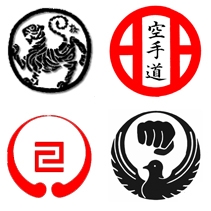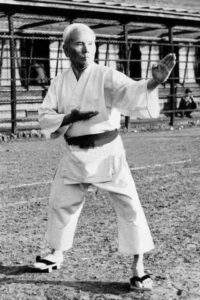
After 19-20 years of sportskarate, and standardization of Shotokan, I had to acknowledge that Shotokan no longer was an option for me. My personal development in Karate has stopped, and we only did stuff that was allowed by the organization.
Everything was characterized by competition, and the fact that Karate is a martial art has thus fallen short. The possibility of personal development was no longer present. So, I got the clear idea that the style was packed in a drawer and attached with a style label, a style that could no longer be developed.
That’s not to say that I have anything against Shotokan. But, what we trained was “what you see is what you get”. This just wasn’t enough for me. Why were there no throws, takedowns, or ground fighting? There were only punches and kicks, and a huge focus on competition.
As I once said, I believe that a Karate style, which cannot look beyond its boundaries, does not have the opportunity to evolve.
I, therefore, began to change my view of Karate back in the year 2000, for the reason that Karate should not necessarily be style-oriented, but more open, receptive, and complete.

”There is no place in contemporary Karate for different styles. I have heard myself and my colleagues referred to as the ”Shotokan style”, but I strongly object to this attempt at classification. My belief is that all ”styles” should be amalgamated into one, so that Karate may orderly progress into man’s future.”
– Gichin Funakoshi (1868-1957)
If we compare Karate to a sliced pizza, every Karate style will be one of those pizza slices. We have a slice that contains, Shotokan-Ryu, Wado-Ryu, Shito-Ryu, Goju-Ryu, as well as styles like Kyokushin, Ashihara, Shorin-Ryu, Uechi-Ryu, etc.
Who doesn’t want a bite of all these slices?
Imagine you live in a city and never get out of it. How can you expect to understand what is happening in other cities? Your horizon is narrowed to look only at the city border.
How should you be able to understand other people’s cultures if you never come out of your country?
Since we are speaking the pizza language, it is important to note the following: Do not go out and try all kinds of slices (styles) for the next several years. Find a club where you feel comfortable as a beginner. Follow the guidelines of the club and do as your teacher says. Once you have found a good and solid foundation, you can start sniffing around to learn something new. This is most often when you have achieved first or second Dan. Don’t let an organization stop your personal development.
Funakoshi said: “There is no place in contemporary Karate for different styles,”. Whether he is right or not must be up to one himself. Nowadays there are a lot of styles and groupings, and there are more and more to come. But basically, they are pretty much all similar. The many styles will always be there and this will probably not change.
Thanks for reading.
Gert
